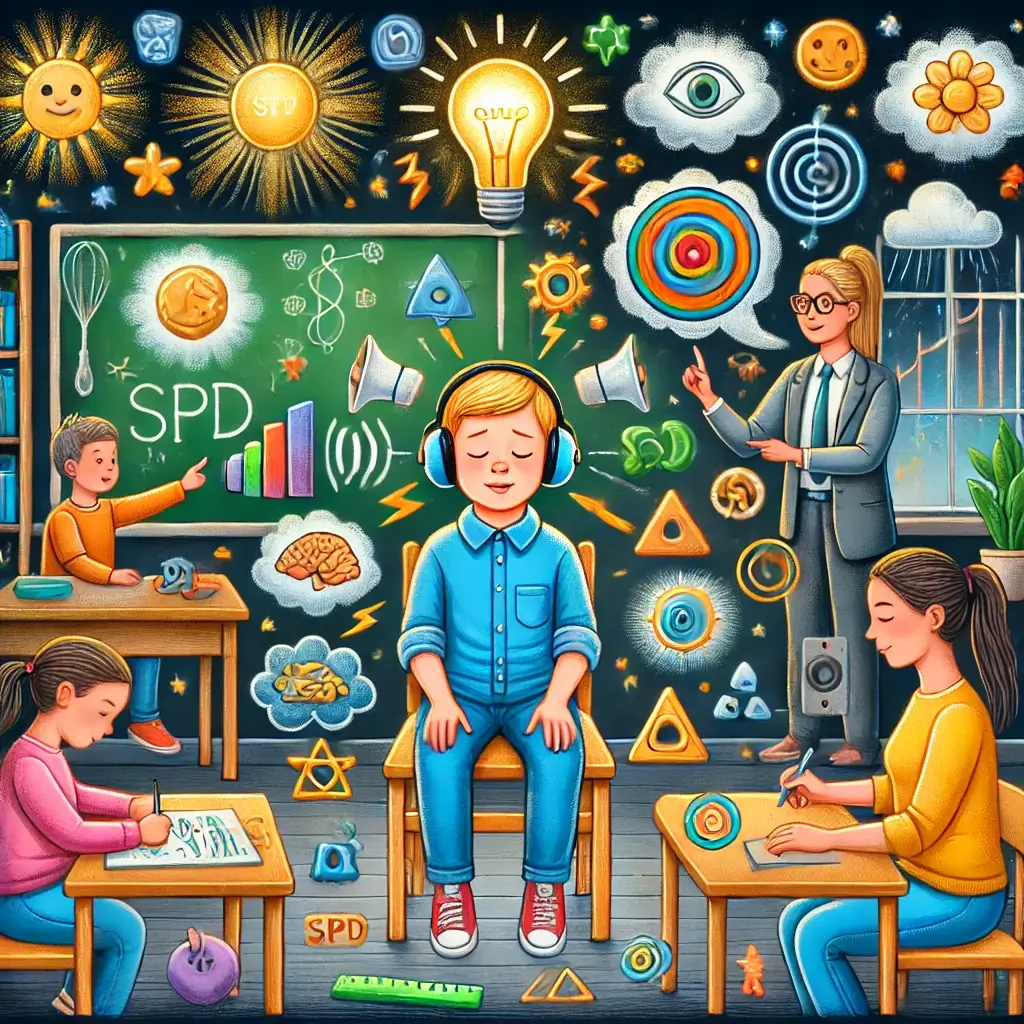The Importance of Understanding Sensory Processing in Children’s Development
Understanding sensory processing issues in school-aged children is vital for supporting their academic, social, and personal development. Sensory processing disorders (SPD) affect how children interpret and respond to sensory information, such as sight, sound, touch, and movement. According to Dr. Emily Chen, Director of Pediatric Occupational Therapy at Children’s National Hospital, “Sensory processing issues aren’t just about sensitivity to stimuli; they fundamentally affect how children learn, interact, and navigate their daily environments.”
Prevalence and Recognition of Sensory Challenges
Despite their prevalence, sensory challenges are often overlooked or misinterpreted as behavioral problems. Research suggests that approximately 15% of school-aged children experience sensory processing difficulties, yet many remain undiagnosed (American Journal of Occupational Therapy, 2024). This lack of recognition can hinder a child’s ability to thrive academically and socially. Over the past five years, a 35% increase in SPD diagnoses reflects improved awareness rather than a rise in prevalence, emphasizing the importance of education for parents and caregivers (American Journal of Occupational Therapy, 2024).
Early Detection and Intervention Impact
The significance of early detection cannot be overstated. A study conducted by the Sensory Integration Research Center (2024) demonstrated that children who receive intervention before age eight show up to 70% improvement in outcomes. Parents are often the first to notice signs of SPD and play a critical role in seeking timely evaluation and support. This article provides parents with the tools to recognize and address sensory challenges, ensuring their children receive the help they need to succeed.
Current Research and Clinical Evidence
Recent studies offer valuable insights into sensory processing disorders and their impact on children’s lives:
Prevalence of Sensory Processing Patterns
A 2024 longitudinal study involving 3,000 school-aged children identified distinct sensory processing patterns:
18% showed signs of sensory over-responsivity (e.g., hypersensitivity to noise, light, or textures).
12% exhibited sensory under-responsivity (e.g., lack of response to stimuli like pain or movement).
15% demonstrated sensory-seeking behaviors (e.g., craving movement or rough play) (Sensory Integration Research Center, 2024).
Sensory Profiles and Academic Impact
Key findings from the Journal of Developmental Psychology (2024) highlighted the following sensory processing challenges:
Visual processing issues affected 25% of cases, leading to difficulties with reading and spatial awareness.
Auditory sensitivity was present in 30%, often resulting in challenges following verbal instructions and coping with noisy environments.
Tactile processing challenges impacted 35%, commonly linked to aversions to clothing textures or food.
Vestibular processing issues (related to balance and movement) were observed in 20%.
Academic Performance Impact
These sensory challenges significantly influence academic performance:
65% of affected children experienced attention difficulties, often mistaken for attention-deficit disorders.
45% faced writing challenges, such as trouble gripping pencils or forming letters.
40% struggled in physical education, particularly with activities requiring coordination or balance.
Warning Signs for Parents
Pediatric occupational therapist Dr. Sarah Thompson emphasizes the importance of observing consistent sensory sensitivities or avoidant behaviors, including:
Visual Processing Issues: Sensitivity to bright lights, difficulty tracking text during reading, or poor spatial awareness.
Auditory Challenges: Covering ears in noisy settings, missing verbal cues, or difficulty following instructions.
Tactile Sensitivity: Aversion to certain fabrics, food textures, or resistance to physical contact like hugs.
Action Steps for Parents
Parents play a pivotal role in supporting children with SPD by implementing these strategies:
Environmental Modifications
Adjust lighting to minimize glare or harsh brightness.
Reduce background noise at home, particularly during study or meal times.
Introduce tactile tools for calming sensory input, such as weighted blankets or fidget items.
Home-Based Routines
Establish predictable routines to help children feel secure and manage sensory overload.
Encourage sensory-friendly activities, like playing with kinetic sand, swimming, or yoga.
Use adaptive equipment, such as noise-canceling headphones or textured seat cushions, to support sensory needs.
Professional Evaluation Guidelines
Parents should consult a pediatric occupational therapist or neurologist if their child:
Displays ongoing sensory sensitivities or avoidant behaviors.
Experiences difficulties in academics, social interactions, or daily routines.
Shows signs of emotional distress linked to sensory triggers.
Conclusion and Future Outlook
The growing awareness of sensory processing disorders underscores the critical need for education and early intervention. By recognizing the signs of SPD, parents can take proactive steps to support their children’s development and ensure they thrive in both academic and social settings. Dr. Michael Roberts, a pediatric neurologist, stresses, “The earlier sensory challenges are identified and addressed, the better the outcomes for the child.”
Evidence-Based Outcomes
With proper identification and evidence-based interventions, children with sensory processing challenges can develop effective coping strategies. Integrated approaches, including sensory integration therapy and environmental adaptations, yield significant improvements for 80% of affected children within one year (Pediatric Sensory Processing Outcomes Study, 2024). The journey begins with awareness and advocacy, empowering parents to help their children succeed.
References
American Journal of Occupational Therapy (2024).
Journal of Developmental Psychology (2024).
Sensory Integration Research Center Study (2024).
Pediatric Sensory Processing Outcomes Study (2024).
Children’s National Hospital Research Review (2024).

